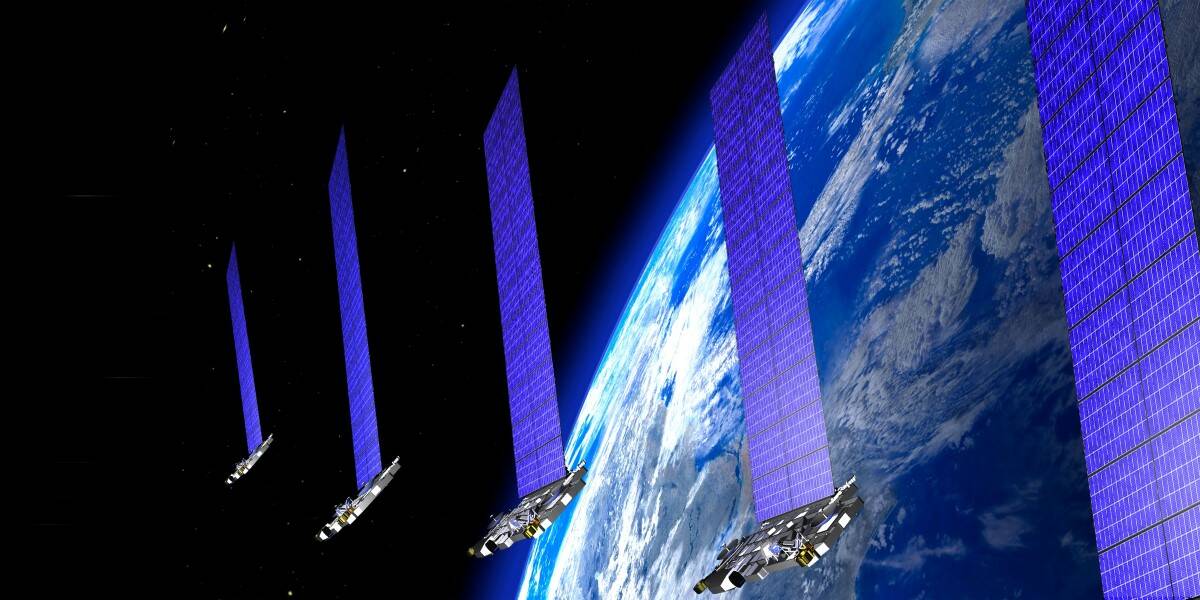Large numbers of low-Earth orbit satellites like Starlink’s could threaten the planet’s ozone layer once they reenter the atmosphere, according to recent research.
Constellations of small satellites deployed for purposes such as broadband coverage typically have a relatively short lifespan, reportedly around five years for Starlink, after which they reenter the atmosphere and burn up, while replacements are sent to take over their roles. .
But researchers at the University of Southern California (USC) say this leads to the formation of aluminum oxides in the atmosphere, which are known to accelerate ozone depletion. The sheer number of satellites involved – Starlink alone had an estimated 6,078 satellites in orbit as of May 2024 – could mean this poses a serious risk.
A research letter published in Geophysical Research Letters, “Potential ozone depletion from satellite demise during atmospheric re-entry in the era of mega-constellations,” says the demise of a typical 250 kg satellite could generate about 30 kg of alumina nanoparticles, they can remain in the atmosphere for decades.
The researchers calculate that large constellations of satellites could release more than 360 tons of aluminum oxide compounds into the atmosphere every year, which could lead to significant ozone depletion.
Aluminum is one of the most common materials in satellites, the article says, and reacts with oxygen when re-entered the atmosphere, creating aluminum oxide that can disrupt ozone chemistry. A chlorine activation reaction catalyzed on the surface of aluminum oxide particles promotes ozone depletion.
The effects of aluminum have been known for some time from research on the emissions of hundreds of tons of such particles from solid rocket engines during atmospheric ascents, but little attention has been paid to vehicles returning from low Earth orbit. the return of satellites, the researchers said.
They estimate that it could take up to 30 years for re-entering byproducts to travel from the top of the mesosphere to the ozone layer of the stratosphere. Upon reaching an altitude of about 40 km, aluminum oxides catalyze the activation of chlorine, which promotes the depletion of the ozone layer.
This would cause a noticeable delay between the start of the injection process, when the bodies in orbit are dismantled, and the effects of ozone depletion becoming visible in the stratosphere. With satellite return rates increasing, it is critical to further investigate the concerns raised in this study, the researchers claim.
How concerned should we be about this? The short answer seems to be that we don’t know and more research is needed.
Until now, scientists were convinced that the ozone layer was slowly recovering from the damage caused by chemicals such as chlorofluorocarbons (CFCs), thanks to the Montreal Protocol agreed in the 1980s.
Last year, a UN-backed Scientific Assessment Panel reported that about 99 percent of banned ozone-depleting substances had been phased out, and said that if current policies are maintained, the ozone layer is expected to recover to 1980 levels (before the appearance of current policy). of the ozone hole) over Antarctica around 2066, and over much of the rest of the planet by 2040.
We asked the USC researchers whether the amount of aluminum oxides they expect to be released into the atmosphere would have a serious impact on the regeneration of the ozone layer.
They told us that the current study only compares the amount of aluminum oxides generated by satellite re-entry with natural levels of them in the atmosphere, and that they are not currently in a position to compare this with the effect of other chemicals, but plan to address this in a future study.
Robyn Schofield, associate professor of atmospheric chemistry at the University of Melbourne, explained in an article that other researchers studying aerosol particles in the stratosphere had previously discovered traces of metals from spacecraft reentry.
“We don’t know what effect this will have,” she says. “A likely outcome would be that the aluminum particles cause the growth of ice-containing particles. This means there would be more small, cold, reflective particles with a larger surface area for chemistry to take place.
“We also don’t know how aluminum particles will interact with the sulfuric acid, nitric acid and water in the stratosphere. As a result, we can’t really say what the impact will be on ozone loss.”
And there is some urgency to find out. Starlink alone and other low-Earth orbit communications companies plan for tens of thousands of new satellites by 2030, and by some estimates the total could be in the millions worldwide. ®
